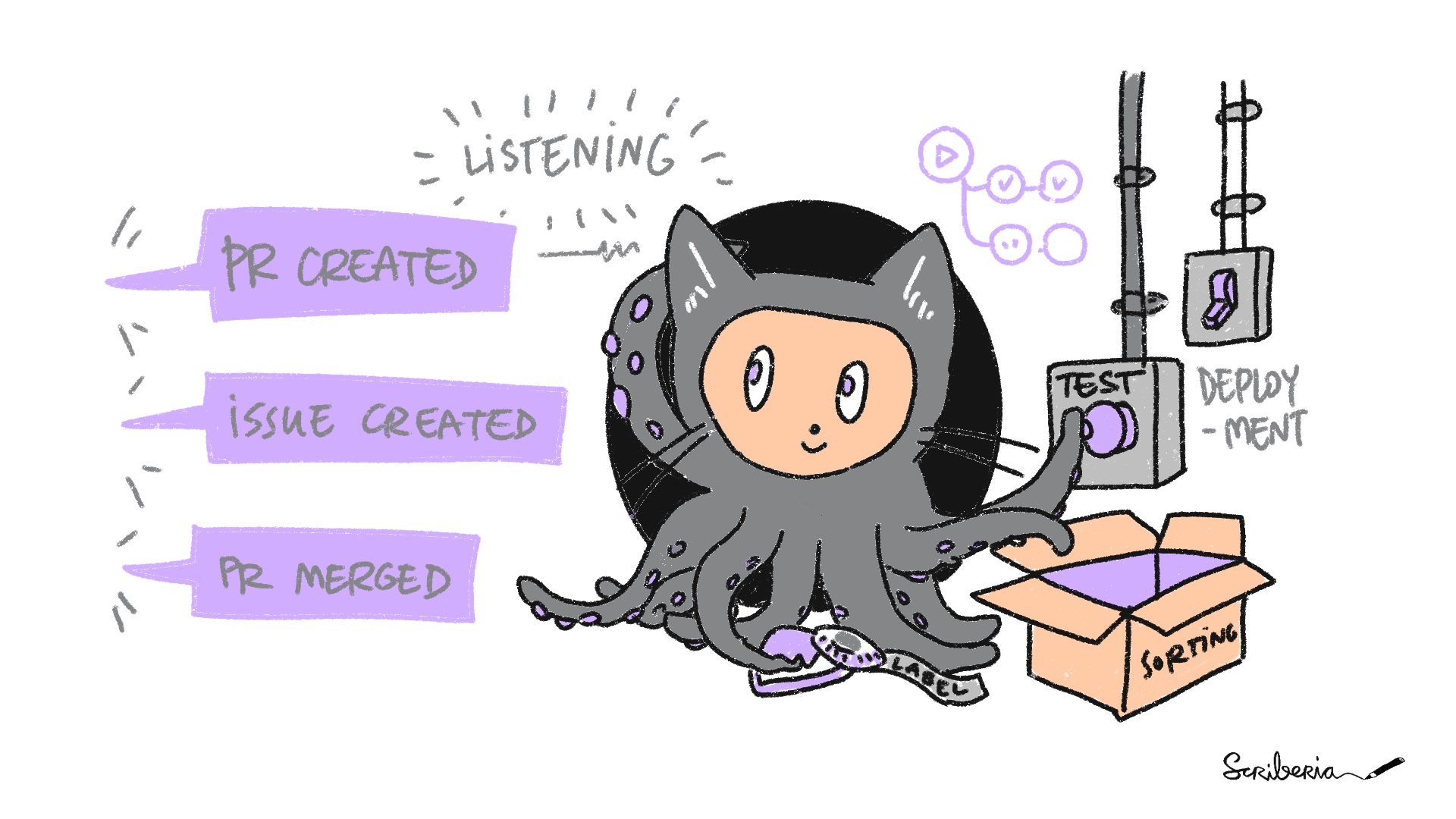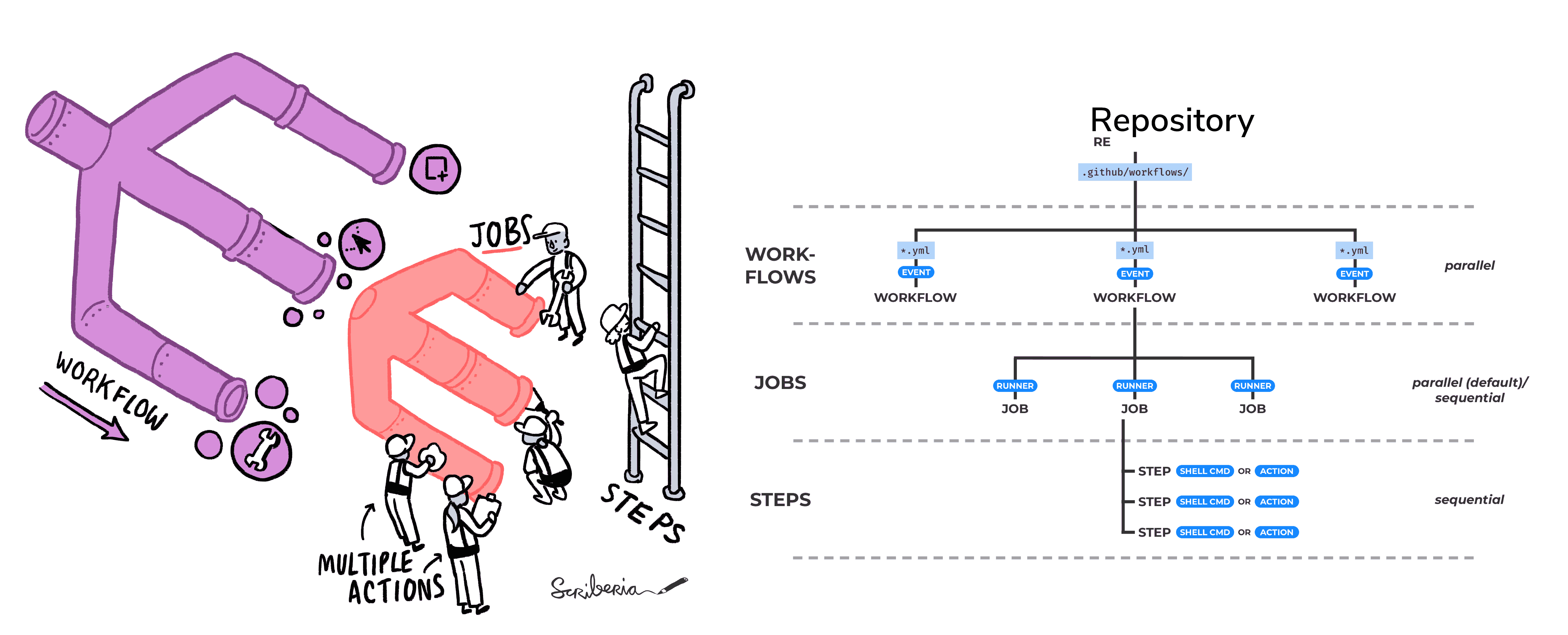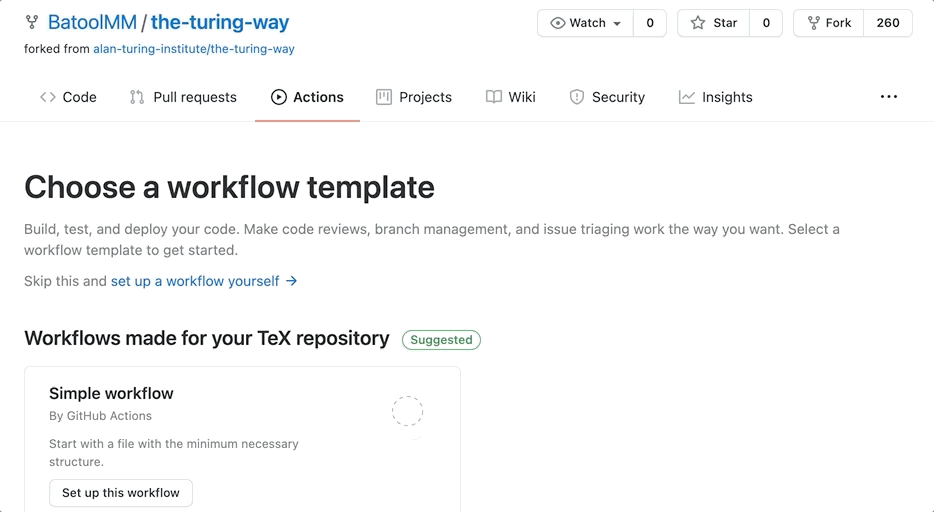This section will walk you through the basic setup of continuous integration (CI) using GitHub Actions (GHA). GHA is a task automation system fully integrated with GitHub. In other words, it is an API that orchestrates any workflow based on any event. Although there are many CI service providers, GHA makes it easier than ever to incorporate CI into your repositories. It provides a flexible way to automate nearly every aspect of your project workflow. Here are just a few examples of use cases of GitHub Actions:
- Automated testing of the software
- Generate reports of the status of any changes in the repository
- Responding to workflow triggers using labels, issues, special mentions, and more
- Triggering code reviews and pull requests
- Managing branches
GitHub Actions are event-driven, which means it responds to any event (Examples: pull request (PR) created, issue created) and triggers an action (Examples: adds a label, runs tests, sort). Any collection of these actions is called a workflow. A more detailed description of this GitHub-related Vocabulary is described in the next section.

Figure 1:The Turing Way project illustration by Scriberia. Used under a CC-BY 4.0 licence. DOI: The Turing Way Community & Scriberia (2024).
GitHub-related Vocabulary¶
1. WorkFlow¶
The workflow is a unit of automation from start to finish. It consists of all the aspects which should be taken into account during the automation including what event can trigger the automation. The workflow can be used to build, test, package, release, or deploy a project on GitHub. It is made of multiple jobs which is formed from steps as shown in the overview diagram below.

Figure 2:On the left: The Turing Way project illustration by Scriberia. Used under a CC-BY 4.0 licence. DOI: The Turing Way Community & Scriberia (2024). On the right: Overview diagram of the most important concepts of GitHub Actions, adapted from morioh.com.
2. Job¶
A job is defined as a set of sequential steps run on the same runner. A workflow can build up of one or several jobs, and can be run either parallel (default) or sequentially.
3. Step¶
A step represents one individual task. A step could be either an action or another command unit, like running a Python script or printing something to the console.
4. Actions¶
A GitHub Action is a piece of automation written in a way that is compatible with workflows. Actions can be written by GitHub, by the open source community, or you can write them yourself!
Getting started with GitHub Action¶
GitHub Actions uses YAML syntax and stored in a directory called .github/workflows in the repository. You can either use a templated workflow or create your own.
1- Using GitHub Actions template¶
If you want to get started with GitHub Actions, you can start by clicking the “Actions” tab in the repository where you want to create a workflow, as shown below. Under the “Actions” tab, you will find popular CI workflows, which can help deploy or automate some tasks in the repository.

You can choose any of these starter workflows and customise them further. An explanation for building blocks within the workflow is described in a later section.
2- Using libraries-specific templates.¶
Github Action template is not the only starter kit available; there are libraries-specific templates for the language of interest. For example, you can use {usethis} package in R to create a template for R packages by running usethis::use_github_action_check_standard(). This will generate GitHub Actions to run CRAN checks after every commit or pull request. That’s all you have to do!
3- Using the configuration of other projects as inspiration¶
Many well maintained open source libraries and estableshed projects use GitHub Actions for their CI. Have a look at the checks lists on pull requests of these projects for inspiration and ideas; following by checking out their CI configuration files. In most cases their licence will allow to copy the bits that would work for your case. The advantage of this approach is to use some approaches that are already working.
For example:
- The Turing Way workflow to build the Turing Way book and to provide a preview for the pull requests
- A matrix of tests on 3 operating systems and multiple Python versions for the Python package NetworkX
- A more complex setup of testing the build in multiple circumstances for the Python package Numpy
In the next section, we will explain building blocks for the workflow.
- The Turing Way Community, & Scriberia. (2024). Illustrations from The Turing Way: Shared under CC-BY 4.0 for reuse. Zenodo. 10.5281/ZENODO.3332807